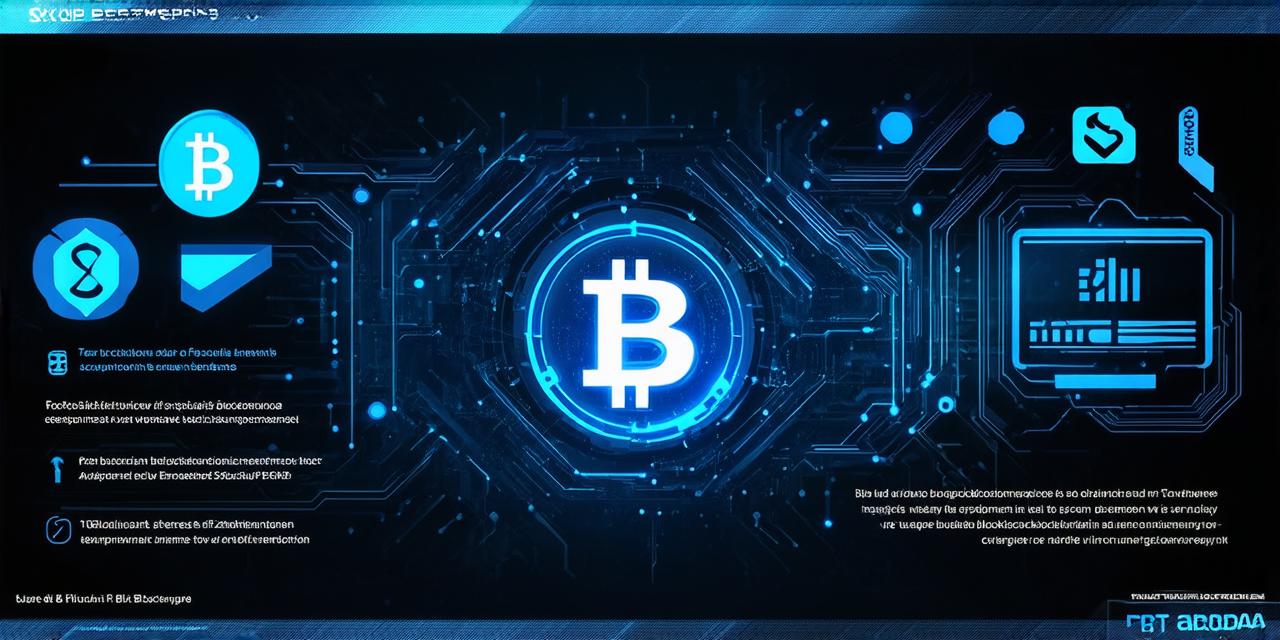Introduction
Blockchain technology is revolutionizing the way we store and share data across various industries. It provides decentralized, secure, and transparent systems that enable individuals to trust each other without intermediaries.
Understanding Blockchain Basics
Before diving into the technical aspects of building a blockchain, let’s first understand what it is and its core concepts. A blockchain is a distributed ledger that records transactions in a secure and transparent manner. It consists of a network of nodes that communicate with each other and validate transactions to ensure they comply with predefined rules.
The following are the key components of a blockchain:
- Nodes: Nodes are computers or devices that participate in the blockchain network. They validate transactions, store data, and propagate new blocks to other nodes.
- Blocks: Blocks are units of data that contain a set of transactions, a timestamp, a nonce, and a cryptographic hash. They are added to the chain in a linear order, forming an immutable ledger.
- Transactions: Transactions are exchanges of value between two parties. They can include anything from financial transactions to property transfers.
- Cryptography: Cryptography is used to secure and verify transactions on the blockchain. It involves encryption and decryption of data using public and private keys.
- Consensus: Consensus is the agreement among nodes in the network on the validity of transactions and the state of the ledger. There are different types of consensus algorithms, including proof-of-work (PoW), proof-of-stake (PoS), and delegated proof-of-stake (DPoS).
Building Your First Blockchain from Scratch
Now that we have an understanding of the basic concepts, let’s move on to building your first blockchain from scratch. We will use Python programming language and the cryptography library to create a simple blockchain.
1. Install Python and the cryptography library
First, you need to install Python and the cryptography library on your system. You can download the latest version of Python from the official website (https://www.python.org/). Once you have installed Python, you can install the cryptography library using pip:
pip install cryptography
1. Define blockchain class and its methods
Next, we will define a blockchain class with its methods to create and manage the blockchain. Here’s an example implementation:
python
class Blockchain:
def init(self):
self.chain []
self.current_transactions []
def add_transaction(self, sender, receiver, amount):
self.current_transactions.append({
‘sender’: sender,
‘receiver’: receiver,
‘amount’: amount
})
def create_block(self):
if not self.current_transactions:
return False

block {
'index': len(self.chain) + 1,
'timestamp': time.time(),
'transactions': self.current_transactions,
'proof': self.calculate_proof(self.chain[-1]['previous_hash']),
'previous_hash': self.chain[-1]['hash']
}
self.chain.append(block)
self.current_transactions []
return True
def calculate_proof(self, prev_hash):
nonce 0
while True:
hash sha256(f'{prev_hash}{str(nonce)}'.encode())
if hash.startswith('00000'):
return hash[:4]
nonce + 1
def get_chain(self):
return self.chainIn this implementation, we define a blockchain class with its methods to add transactions, create blocks, calculate proof, and get the chain. We use the SHA-256 hashing algorithm to create unique hash values for each block.
1. Run the blockchain
Now that we have defined the blockchain class, let’s run it and test it out. Here’s an example usage:
python
blockchain Blockchain()
Add transactions
blockchain.add_transaction(‘Alice’, ‘Bob’, 10)
blockchain.add_transaction(‘Bob’, ‘Charlie’, 5)
Create blocks
blockchain.create_block()
blockchain.create_block()
Print chain
print(blockchain.get_chain())
This will output a list of blocks with their index, timestamp, transactions, proof, and previous hash. You can verify the integrity of the blockchain by checking if each block’s proof matches its previous block’s hash.
Customizing Your Blockchain
Now that you have built your first blockchain from scratch, let’s discuss how to customize it for specific use cases. Here are a few examples:
- Smart contracts
Smart contracts are self-executing programs that automate the enforcement of agreements between parties on the blockchain. They can be implemented using various programming languages and frameworks. One popular example is Ethereum’s Solidity language, which allows you to create decentralized applications (dApps) on top of the Ethereum network.
To customize your blockchain for smart contracts, you can use a programming language like Solidity to define the rules and logic of the contract. You can then deploy the contract on your blockchain by creating a new transaction with the contract’s bytecode as data.1. Permissioned vs. permissionless blockchains
Blockchains can be public (permissionless) or private (permissioned), depending on who is allowed to participate in the network and validate transactions. Public blockchains like Bitcoin and Ethereum are open to anyone, while private blockchains are restricted to a specific group of participants.
To customize your blockchain for a specific use case, you can choose whether to make it public or private. You may also need to implement access controls and authentication mechanisms to ensure only authorized users can participate in the network.1. Consensus algorithms
As mentioned earlier, there are different types of consensus algorithms used in blockchains, such as PoW, PoS, and DPoS. The choice of consensus algorithm depends on factors like scalability, energy consumption
